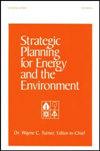关于人工湿地净化河流污染水的效果和温室气体排放的研究
Q3 Environmental Science
Strategic Planning for Energy and the Environment
Pub Date : 2023-12-24
DOI:10.13052/spee1048-5236.4315
引用次数: 0
摘要
为探讨不同基质的构建湿地对河流污染水体净化及其温室气体排放的影响,本研究设计了以传统砾石(CW-G)、火山岩(CW-V)和生物质碳(CW-B)为填充基质的三组小型构建湿地实验系统,考察不同构建湿地系统对COD和氮污染物的去除效果,并进一步分析其对温室气体排放的影响。结果表明,三组构建湿地对有机物的去除率均达到 90% 以上,CW-V 和 CW-B 对 NH4 + -N 和 NO3- -N 的去除率分别为 49.29% 至 58.71%,与 CW-G 相比,CW-V 和 CW-B 对 NH4 + -N 和 NO3- -N 的去除率显著提高(P < 0.05)。温室气体排放量的比较显示,虽然 CW-B 对 NO3- -N 的去除率更高,导致其 N2O 排放量最高,但其脱氮比例仍然最小。此外,由于进水中有机物的快速消耗以及部分 CH4 被氧化为 CO2,三组建造的湿地均未检测到 CH4。研究结果表明,三类基质构建湿地的处理效果和温室气体排放差异显著,该研究可为净化河流污染水体的湿地建设和运行提供一定的科学参考。本文章由计算机程序翻译,如有差异,请以英文原文为准。
Study on the Effectiveness of Constructed Wetlands in Purifying Polluted Water from Rivers and Greenhouse Gas Emissions
In order to investigate the effect of different substrates of constructed wetlands on the purification of polluted water in rivers and their greenhouse gas emissions, this study designed three small-scale constructed wetland experimental systems with traditional gravel (CW-G), volcanic rock (CW-V) and biomass carbon (CW-B) as filler substrates to investigate the effect of different constructed wetland systems on the removal of COD and nitrogen pollutants and to further analyse their effect on greenhouse gas emissions. The results showed that the removal rates of organic matter in all three groups of constructed wetlands reached over 90%. and 49.29% to 58.71%, respectively, with CW-V and CW-B significantly improving the removal of NH4 + -N and NO3− -N compared to CW-G (P < 0.05). A comparison of greenhouse gas emissions reveals that although CW-B resulted in the highest N2O emissions due to its better removal of NO3− -N, its share in nitrogen removal was still the smallest. In addition, the rapid consumption of organic matter in the influent water and the oxidation of some CH4 to CO2 resulted in no detectable CH4 in any of the three groups of constructed wetlands. The results of this study show that the differences in treatment effects and greenhouse gas emissions between the three types of substrate constructed wetlands are significant, and this study can provide some scientific reference for the construction and operation of wetlands for the purification of polluted water bodies in rivers.
求助全文
通过发布文献求助,成功后即可免费获取论文全文。
去求助
来源期刊

Strategic Planning for Energy and the Environment
Environmental Science-Environmental Science (all)
CiteScore
1.50
自引率
0.00%
发文量
25
 求助内容:
求助内容: 应助结果提醒方式:
应助结果提醒方式:


